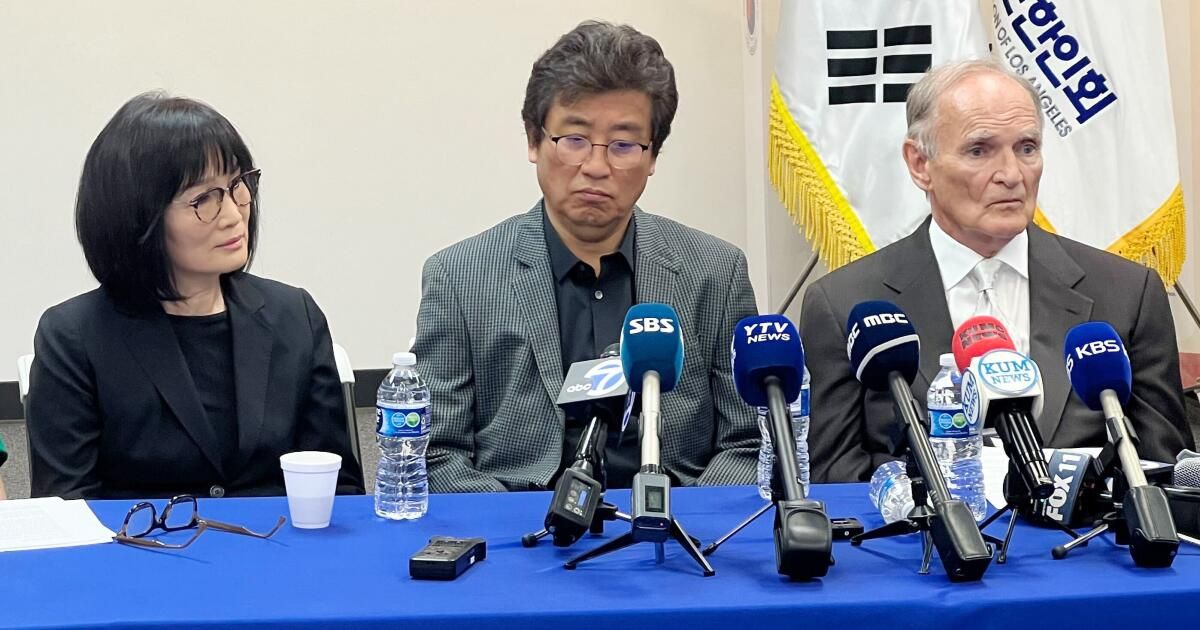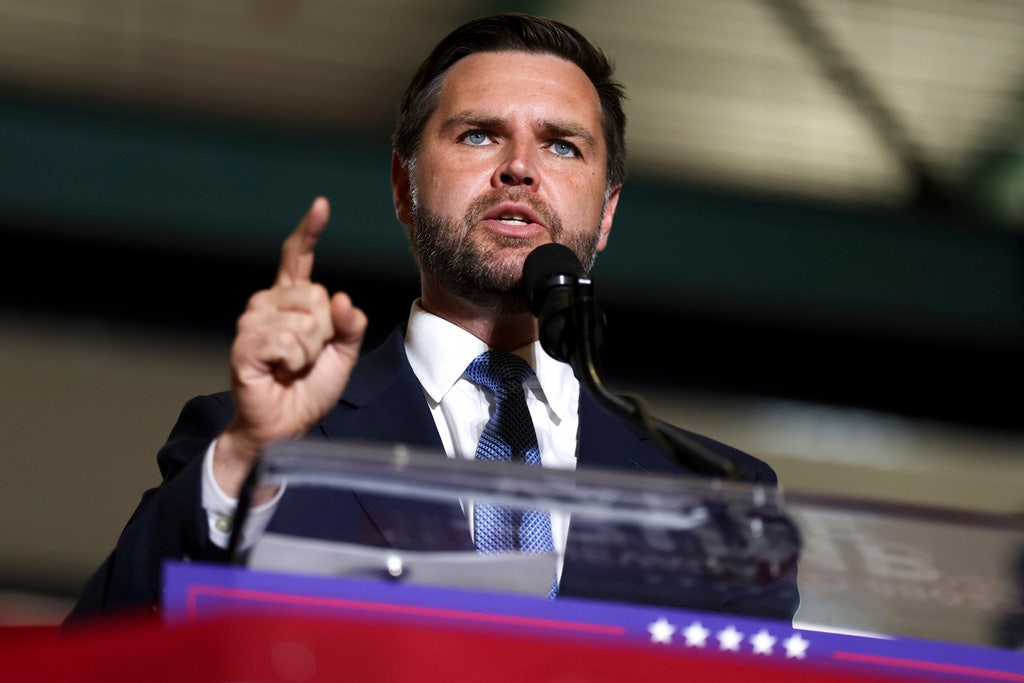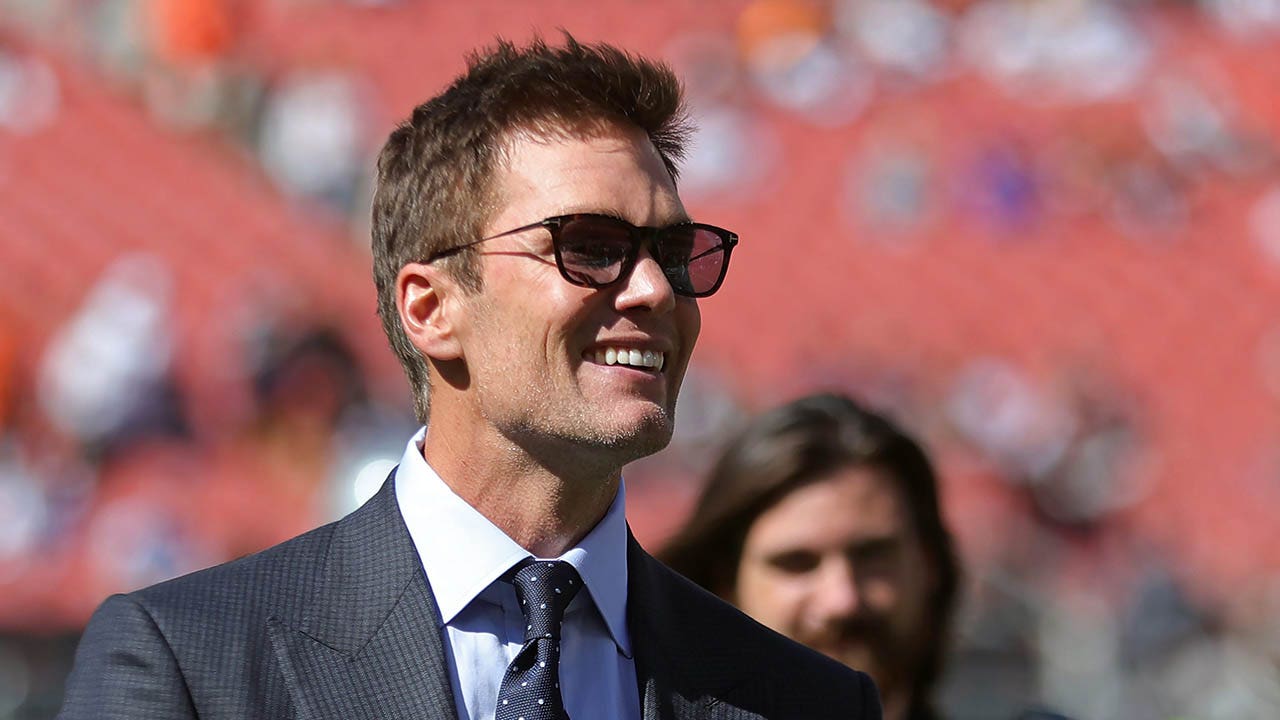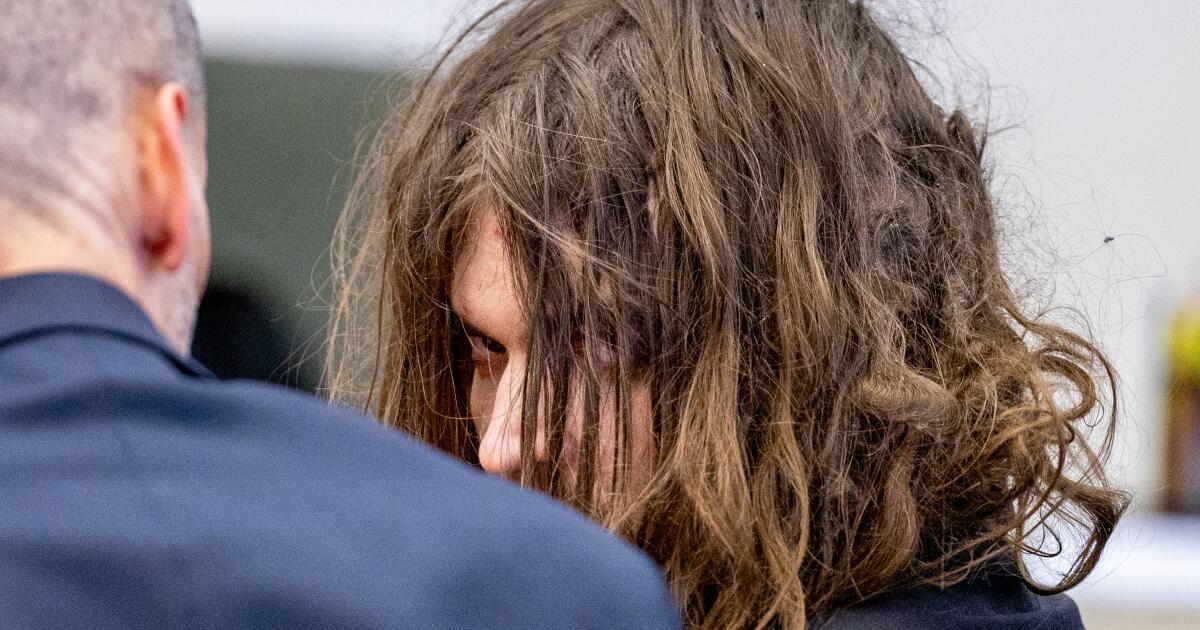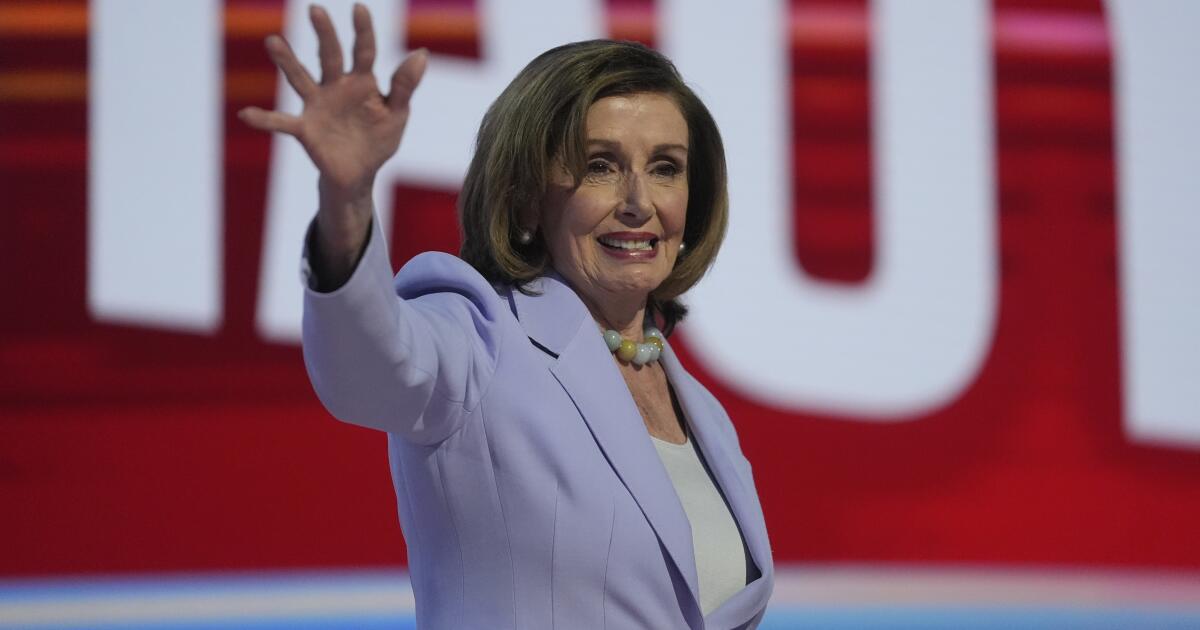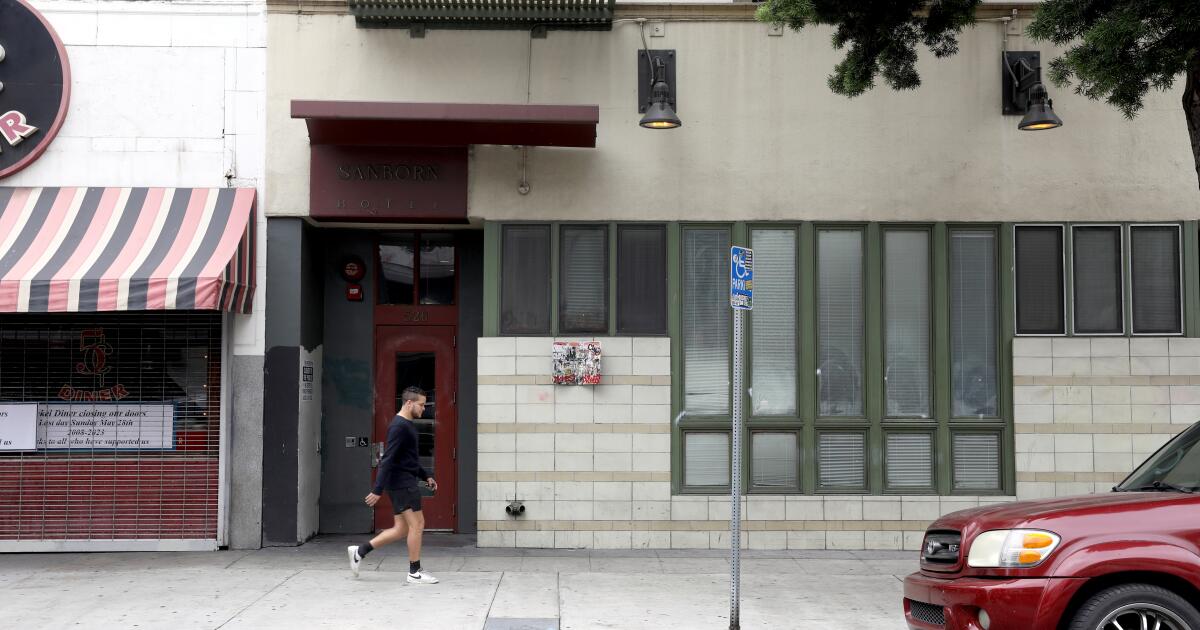Before Yong Yang was shot and killed by Los Angeles police last week inside his parents' Koreatown home, his mother called mental health officials for help.
Her 40-year-old son was experiencing a severe bipolar episode, Myung Sook Yang said, and she specifically contacted the county Department of Mental Health (DMH) before the shooting to avoid involving authorities.
Within hours of making the call, her son was dead, murdered in his family's living room while holding a kitchen knife, police said.
On Tuesday, LAPD officials released the department's annual use of force report, which showed an increase in the number of times officers opened fire, from 31 times in 2022 to 34 last year, more than any other apartment in a large US city
Officials blamed the increase in part on the number of people shot who, like Yang, were holding sharp objects while in a mental health or substance use-related crisis, a trend the department has fought for years to curb.
At an emotional news conference Thursday at the Korean American Federation headquarters in Los Angeles, Yang's family and his lawyers demanded answers about DMH's decision to seek enforcement.
Pausing at times to sob into a tissue, Myung Sook Yang said, “There is a reason I called the Department of Mental Health, not the police; “It was so I could help, not to shoot him.”
“I thought they would help him and take him to the hospital,” he said. “Instead he is shot and we want an explanation of how this could have happened.”
As she spoke, her husband, Min Yang, squeezed her shoulder to comfort her.
Yong Yang's family said he had long struggled with his mental health. While he was never violent, authorities had previously placed him on a so-called 5150 suspension, a detention of up to 72 hours for those considered a threat to themselves or others.
In recent years, her mother said, she had learned to keep her symptoms at bay through a regimen of “prayer, playing tennis, yoga, exercising and hiking.”
Still, his family said, he occasionally had episodes like the one that occurred the day he was shot. Concerned about not being able to continue caring for him, the family contacted DMH for help two days in a row.
Yang's father told reporters that his son's behavior was not threatening on May 2 when a DMH representative showed up at the family's home in the 400 block of South Gramercy Place for an evaluation.
Min Yang said the doctor spent less than two minutes talking to Yang before deciding to call the police.
After officers arrived, he said, they told him and his wife to wait outside while they tried to contact Yang, and were not informed that their son had been shot until much later.
Robert Sheahen, an attorney for the family, said that based on the information he had, police did not use any less-lethal weapons to try to subdue Yang despite being “equipped with a complete knowledge of the son's mental health history.”
“The LAPD sent nine officers to the house in a military-style maneuver to execute a 40-year-old mental patient,” Sheahen said. “In reality, things get worse: after the cold-blooded murder, the agents did not notify the mother that they had shot her son.”
Messages left seeking comment from spokespersons for the LAPD and DMH were not immediately returned Friday.
Sheahen said the family is calling for an independent investigation.
He said officers failed to provide immediate medical attention to Yang and “destroyed all physical evidence at the crime scene.”
“They destroyed every bloodstain, every hair follicle, every piece of physical evidence that could tell us what those officers within the department did to kill the child,” he said.
He said the family was preparing to file a government lawsuit against the city, the usual precursor to a wrongful death lawsuit.
An LAPD press release issued the day after the shooting gave a markedly different account of the incident, stating that officers were summoned to the scene after Yang attempted to assault the DMH employee.
The police statement said the DMH worker told the first arriving officers that Yang posed a threat to others, prompting the decision to request more police and notify the department's Mental Health Assessment Unit. According to the statement, the officers decided to enter the house after several failed attempts to convince Yang to come out alone.
After Yang refused to come out, officers used a key to enter the residence and said they found Yang holding a knife. Within moments, he “advanced toward the officers and an officer-involved shooting occurred,” according to the statement.
Paramedics responded to the scene and pronounced him dead, according to the release. No officers or bystanders were injured.
James An, president of the Korean American Federation, said DMH had held a community presentation in Koreatown just weeks earlier to inform families of people with mental illness about the resources available to them. Attendees were told they could call DMH, rather than the police, for nonviolent emergencies, he said.
An said he had spoken with LAPD Acting Chief Dominic Choi, who had assured him that a thorough investigation into the incident would be conducted.
Community members had met with Choi, the city's first Korean-American chief, and Mayor Karen Bass days before the shooting to discuss recent attacks in the area. Most attendees left satisfied that city officials were listening to their safety concerns and hopeful that the meeting was a step toward “rebuilding” his relationship with the Police Department, An said.
But Yang's death, which was widely covered by Korean-language media, left the community with “a lot of questions,” he said.
Thursday's news conference came amid renewed scrutiny over the LAPD's use of deadly force. Statistics released this week by the department showed that Los Angeles police had twice as many on-duty shootings as their counterparts in Chicago, a city with nearly 4,000 more officers and 1.3 million fewer residents than Los Angeles.
More police shootings in Los Angeles were fatal than in any other comparable department, including New York City, which also had four fewer incidents overall despite being a larger city and force, the report showed.
The numbers raised concern among several members of the Los Angeles Police Commission, the department's civilian oversight body, at its weekly meeting Tuesday. Commissioner William Briggs questioned whether the department could be doing more to handle encounters involving people with edged weapons such as knives and swords, which accounted for a significant number of shootings.
Department officials said the reasons for the disparity are complicated and more time is needed to understand them.
The department has expanded its training to deal with people with emotional problems, even as its leaders have acknowledged that not all mental health emergencies require the presence of armed police.
They have pushed for more of these noncriminal calls to be turned over to a Systemwide Mental Assessment Response Team, or SMART, which pairs officers with county mental health clinicians who are trained to peacefully de-escalate confrontations with people with disabilities. mental illnesses that may not respond well to yelling. commands and flashing police lights.
Last year, SMART responded to about 6,534 emergencies, a fraction of the nearly 43,000 calls for service involving people with mental illness or experiencing a behavioral health crisis, according to department statistics. Calls involving weapons or threats of violence are almost always routed to police.
Police officials have previously blamed staffing shortages in the county for shortcomings in coverage by mental health joint response teams, although Choi told the commission Tuesday that in recent months the county had made progress in hiring more doctors.
Earlier this year, city officials launched a pilot program that sends trained, but unarmed, civilians to certain mental health emergencies in three police divisions, with plans to evaluate their performance after a year and potentially expand it to the entire police force. city.
Modeled after the heralded Cahoots program in Bend, Oregon, the initiative has two teams of mental health professionals available 24 hours a day, seven days a week, for nonviolent situations that would normally fall to the police, such as carrying out social assistance checks and calls. for public intoxication and indecent exposure.
Department officials have repeatedly said that, despite increased crisis intervention training and new less-lethal weapons designed to incapacitate rather than kill, officers are not always equipped to handle most mental health calls. At the same time, police say, these types of calls have the potential to quickly escalate into violence.
Los Angeles was one of the major American cities to commit to developing and investing in new emergency responses that use trained specialists to provide help to the homeless and those suffering from mental health and substance abuse issues. But similar efforts have failed in cities like New York.
Activists argue that such efforts remain woefully underfunded and, in some cases, still too closely aligned with law enforcement.
Some initiatives have had difficulties in expanding crisis intervention alternatives. Earlier this year, the Los Angeles Fire Department recommended ending a pilot program after officials said it didn't actually free up first responders and hospital emergency rooms.

